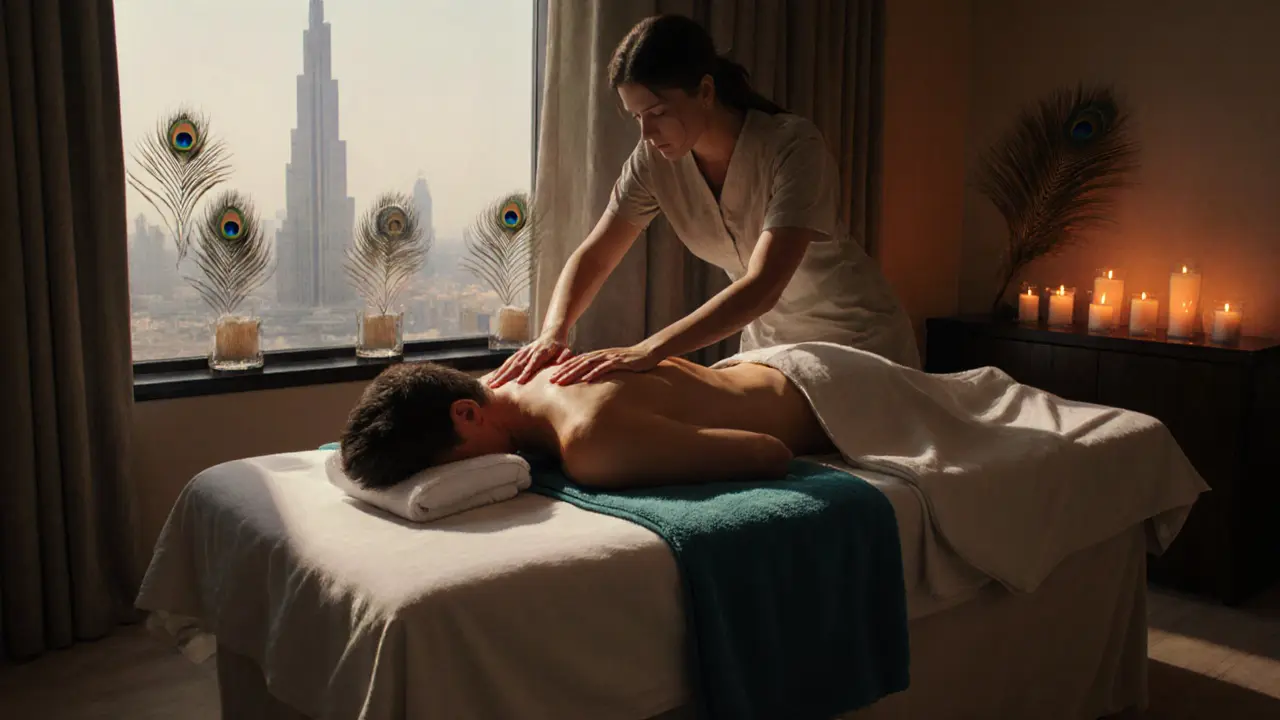Key Takeaways
- Most people benefit from a full body massage every 2‑4 weeks.
- Frequency depends on goals: relaxation, muscle recovery, or chronic pain.
- Listen to your body - signs of over‑massaging include lingering soreness or fatigue.
- Combine massages with stretching, hydration, and proper sleep for best results.
- Choose licensed therapists and reputable spas in Dubai for safety and consistency.
Direct Answer
If you’re looking for general wellness, aim for a full body massage once every 2‑4 weeks. Athletes or people with chronic tension may schedule sessions weekly, while occasional relaxers can space them out to every 6‑8 weeks.
Comprehensive Guide to Full Body Massage Frequency
Imagine you’re planning a fitness routine. You wouldn’t run a marathon every day without rest, right? The same logic applies to massage therapy. Knowing how often to schedule a Full body massage helps you reap the benefits without over‑doing it.
Definition and Context
A Full body massage is a therapeutic practice that works on all major muscle groups from head to toe. It usually lasts 60‑90 minutes and incorporates a blend of strokes-effleurage, petrissage, friction-to promote circulation, reduce tension, and trigger the release of endorphins. In Dubai’s bustling environment, this holistic treatment offers a rare chance to reset both body and mind.
Benefits of Regular Full Body Massage
Regular sessions can transform how you feel day‑to‑day. Here’s what most clients notice:
- Improved circulation: Gentle pressure nudges blood flow, delivering oxygen and nutrients to muscles.
- Reduced stress hormones: Cortisol drops while serotonin and dopamine rise, leading to a calmer mood.
- Enhanced flexibility: Looser muscles mean a broader range of motion during workouts or daily tasks.
- Faster muscle recovery: Micro‑trauma from exercise heals quicker when massage boosts lymphatic drainage.
- Better sleep quality: Many report deeper, uninterrupted sleep after a weekly session.

Types of Massage Available in Dubai
Dubai’s spa scene offers a menu of techniques. Knowing the difference helps you pick the right match for your frequency goals.
- Swedish massage - Light to medium pressure, ideal for relaxation and stress relief. Perfect for beginners who want a gentle weekly routine.
- Deep tissue massage - Focuses on deeper muscle layers, great for chronic tension. Athletes often schedule these every 1‑2 weeks.
- Sports massage - Tailored to pre‑ or post‑event recovery, emphasizing stretching and myofascial release. Typically booked weekly during training cycles.
- Aromatherapy massage - Combines essential oils with gentle strokes, enhancing mental calm. Good for occasional stress management every 4‑6 weeks.
How to Find Quality Massage Services in Dubai
Finding a trustworthy therapist doesn’t have to be a gamble. Follow these steps:
- Check licensing: The Dubai Health Authority (DHA) requires therapists to be certified.
- Read reviews on platforms like Google, TripAdvisor, or local forums such as Expat.com.
- Visit the spa’s website: Look for clear hygiene policies, therapist bios, and service menus.
- Ask about therapist specialization - some focus on sports rehab, others on relaxation.
- Schedule a short 30‑minute trial if you’re unsure; many spas offer introductory rates.
What to Expect During a Full Body Session
First, you’ll fill out a brief health questionnaire. The therapist will explain the pressure level and ask if you have any problem areas. The room is usually dimmed, with soft music and a warm table. Expect a sequence that starts at the shoulders, moves down the spine, works the legs, and finishes with the feet and scalp. Most clients lie face‑down for 60 minutes, then flip over for the final 15 minutes.
Pricing and Booking Tips
In Dubai, a 60‑minute full body massage typically costs between AED 250 and AED 600, depending on venue and therapist expertise. Here’s how to keep costs in check:
- Book during off‑peak hours (early mornings or late evenings) for discounts.
- Buy package deals - 5‑session bundles often shave 15‑20% off the single‑session price.
- Watch for seasonal promotions around Ramadan, UAE National Day, or major hotel events.
Most spas allow online booking via their website or through apps like Booksy. Have your preferred time, therapist name, and any health notes ready to speed up the process.

Safety and Health Considerations
Massage is safe for most people, but keep these pointers in mind:
- If you’re pregnant, opt for a certified prenatal therapist and avoid deep pressure on the abdomen.
- People with recent fractures, skin infections, or severe hypertension should consult a doctor first.
- Stay hydrated before and after the session - water helps flush out released toxins.
- Never schedule a full body massage the day after a heavy workout if you’re prone to soreness; a lighter session or a stretch-focused treatment may be better.
Comparison Table: Full Body Massage vs. Swedish Massage vs. Deep Tissue Massage
| Feature | Full Body Massage | Swedish Massage | Deep Tissue Massage |
|---|---|---|---|
| Typical Session Length | 60-90 mins | 45-60 mins | 60-90 mins |
| Pressure Level | Medium (adjustable) | Light‑to‑medium | Medium‑to‑strong |
| Primary Goal | Overall wellness & relaxation | Stress reduction & circulation | Release deep knots & chronic pain |
| Typical Cost (AED) | 250‑600 | 200‑450 | 300‑650 |
| Ideal Frequency | Every 2‑4 weeks (adjustable) | Every 3‑4 weeks | Weekly or bi‑weekly for athletes |
FAQ: Your Questions About Full Body Massage Frequency Answered
How many times a month should I get a full body massage?
For general stress relief, 1‑2 sessions per month work well. If you’re dealing with chronic muscle tension, you might move up to 3‑4 sessions, but always monitor how your body feels.
Can I schedule a massage right after a workout?
It’s better to wait 24‑48 hours after an intense workout. Immediate deep pressure can increase inflammation. A light Swedish session can still be soothing, though.
Is there a risk of over‑massaging?
Yes. Too many high‑intensity sessions can lead to bruising or lingering soreness. Balance massage with adequate rest, hydration, and gentle stretching.
Do I need to tip my therapist in Dubai?
Tipping isn’t mandatory, but a 10‑15% tip is appreciated, especially if the therapist customized the session to your needs.
Can I combine a full body massage with other spa treatments?
Absolutely. Many spas bundle massages with facials, hydrotherapy, or body scrubs. Just book a longer slot (120 mins) to avoid feeling rushed.
Ready to Schedule Your Next Session?
Take the first step toward a calmer, more flexible you. Find a licensed therapist, pick a frequency that matches your goals, and book that full body massage today. Your body will thank you.







October 25, 2025 AT 15:46
Honestly, I think the whole “every 2‑4 weeks” recommendation is just a marketing ploy pushed by big spa chains to keep us coming back.